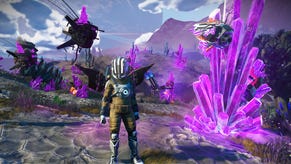No Man's Sky Next on PC: brilliant visuals but performance is concerning
Steep GPU requirements, v-sync bugs and a poor tweaking experience.
No Man's Sky's recently released Next update radically improves content and visuals and we've had a lot of fun playing it in its new Xbox One X incarnation - but we've got to say that the PC version still needs a lot of work. Performance doesn't seem to be where it should be, even on higher-end GPUs while basics like v-sync don't seem to work properly. On top of that, right from the off, basic user-friendliness comforts and presentation create a genuinely poor introduction to the game. For a title that has improved so dramatically since launch, we genuinely hope to see Hello Games make one last push to make life easier for PC users.
It starts with the game's first load, where No Man's Sky spends a lot of time pre-caching shaders. On a top-end Ryzen processor, this procedure takes over three minutes to complete, while other reports have seen waiting times of anything up to ten minutes depending on the CPU in question. As first impressions go, this is pretty dreadful and really needs to be improved. Secondly, there's the joypad orientated options selection system that still sees you holding down a button or key to actually make a change. Next up, there's No Man's Sky's remarkable lack of user-friendliness in tweaking for performance - adjusting options inevitably leads to the need to completely restart the game. Even turning off v-sync requires a full reload of the game... really?
And that leads us on to the next major issue - the implementation of v-sync doesn't seem to act as it should and there are profound performance implications as a result. With v-sync enabled on a Ryzen 7 1700X/GTX 1070 system, frame-rate monitors report a solid 60fps, however on-screen motion is plagued with stutter and running captured footage through our tools, the game seems to ricochet between 16ms and 33ms frame-times. Turning off v-sync seems to put the game into a borderless windowed mode, where frame-rate can exceed 60fps but there's no sign of any tearing. It's an improvement but it's still not working correctly.
Moving to a mainstream-orientated Core i5 8400 system paired with GTX 1060, v-sync did work and frame-rate is reported correctly, but performance hard-locks to either 30fps or 60fps. Turning v-sync off works here, but the only way to get a triple-buffered, smoother v-synced experience is to run the game in windowed mode. Moving to AMD's RX 580 alternative on the same i5 system, v-sync didn't work at all, always tearing regardless of setting. Only by using the GPU control panel alternative could we get a good, smooth triple-buffered experience. The overall takeaway here is that one of the most very basic settings that defines performance, consistency and image integrity is not working correctly, giving the PC version an even worse first impression.
It's difficult to make any recommendations here on tweaking the game as results seem to vary depending on hardware and in-game options. To illustrate, running the game with Titan X Pascal saw v-sync not working at 1080p resolution, yet it seemed to work just fine once we flipped to 4K and rebooted the game. It seems clear that there's a lot for Hello Games to address here, but it may well be the case that GPU driver optimisation has a part to play too. In our tests, AMD's RX 580 has an undeniable performance advantage over the GTX 1060. However, the Radeon experience is blighted by highly intrusive stutter that has a severe impact on the game. GeForce is slower (and dropping settings doesn't reclaim anything like as much performance as it does on AMD) but at least it's consistent.
Visually, No Man's Sky has been radically revamped since we looked at the PC version at launch, and we should give credit where it's due. The cumulative updates and the Next revamp do increase system requirements (4K60 on GTX 1080 Ti class hardware is no longer possible) but the visual pay-off is worth it. Temporal anti-aliasing and per-object motion blur look wonderful in combination with the new third-person camera. Procedural generation quality and draw distance are on another level compared to launch code and while the volumetric clouds have low resolution and colour banding issues, it's convincing enough when you look at the image as a whole and works well.
And that sums up the visual package as a whole - looking from a wider perspective, these added details embellish the game's already great style, and the overall package holds up well, though imperfections and inaccuracies to tend to show up when looking closer. Overall, given how much is generally being simulated and generated through the procedural seeds, Hello Games has done an excellent job rendering these strange alien worlds - but the bottom line is that there is a significantly higher performance cost now and so tweaking the options is the way forward in improving frame-rates.
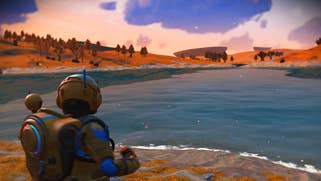
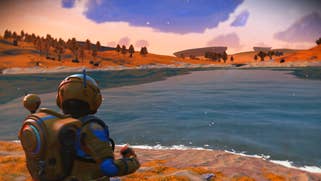
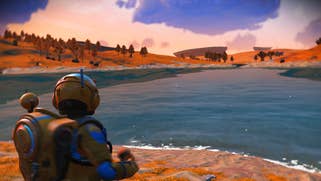
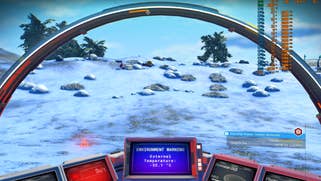
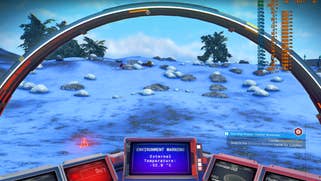

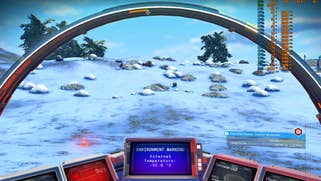



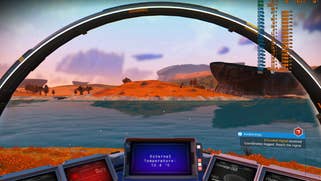
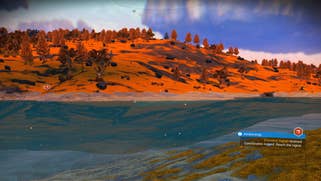
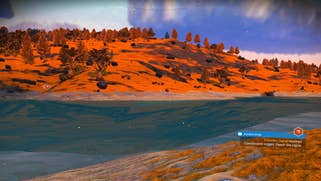


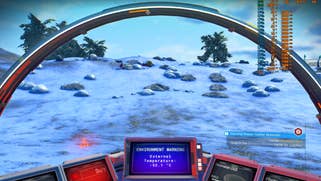

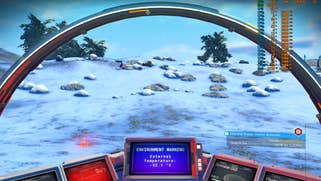
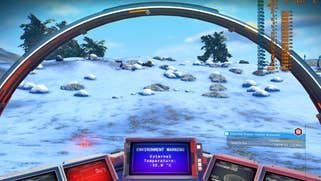
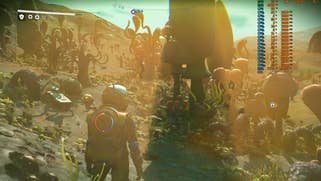
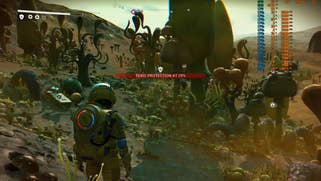

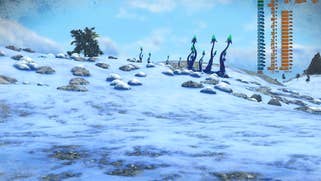

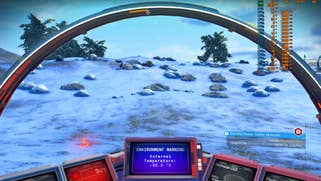
It is worth stressing that the overall range of scalability at a fixed resolution is fairly limited. With a GTX 1070, starting at the lowest quality level at 1080p, increasing all settings to ultra reduced performance by just 26 per cent. We've got more detailed numbers coming up, but due to the inherently dynamic nature of the game and the way that GPU utilisation adjusts radically even with just a tiny adjustment of the camera, you should take our recommendations as a starting point for your own push to improving performance. We took a look at each major setting and compared the same scene at each quality preset, but you can imagine that shadows, for example, will see the performance load adjust significantly depending on how much actual shadow coverage there is in the scene.
There are also some surprises here. For example, anisotropic filtering at 1080p usually has a negligible hit to performance, but not so here - full-on 16x AF has a four per cent performance cost on our test system. On top of that, actual texture quality also has an impact on frame-rate too - around seven per cent moving from ultra to low. Actual VRAM utilisation varies from 3GB to 4GB at 1080p, and this is an area where you can tweak with littie impact to visual quality - textures at medium settings look fine.
Our screenshot comparisons and video should give you a strong idea of how far you can lower settings until the quality reduction starts to hit and below we've put together a table of performance increases along with a screenshot of our optimised settings. Our numbers come from running the game on an AMD Ryzen 1700X system paired with a GTX 1070. What is fascinating here is that moving from the top-end ultra settings to our optimal settings only saw a seven to 10 per cent uplift in performance on Nvidia hardware, and this rose to an impressive 20 per cent on the AMD Radeon RX 580. However, despite the overall improvement to performance, stutter still manifests on the AMD card and really hurts the experience.
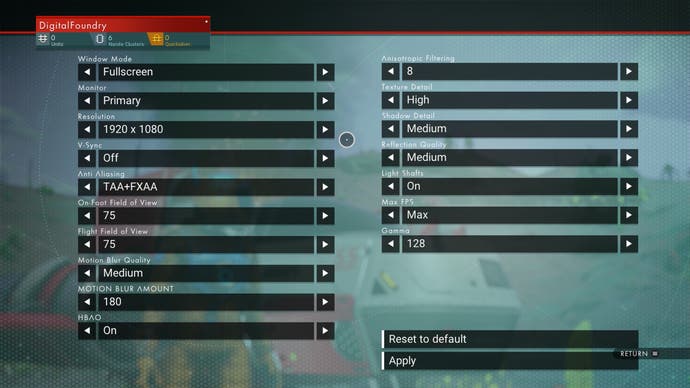
| GTX 1070/1080p | Ultra/On | High | Medium | Low/Off |
|---|---|---|---|---|
| Texture Quality | 100% | 101% | 103% | 107% |
| Reflections | - | 100% | 105% | 108% |
| Shadows | 100% | 104% | 107% | 109% |
| Motion Blur | 100% | 113% | 124% | 125% |
| Light Shafts | 100% | - | - | 105% |
An interesting footnote concerns tessellation - it was mooted as a new option for the Next update but it's not a part of the options at all and doesn't manifest in-game by default. However, dipping into the game's .ini files allows you to activate it and the effect is clearly worthwhile. In our tests, it hit performance by around five per cent, which isn't a bad turnout for an effect with an immediate visual return. Maybe the feature still needs more work, but we'd certainly like to see it added to the options screen and a more granular level of settings tweaks would be welcome. Based on our tests, scalability through the existing options only goes so far and adjusting rendering resolution is easily the best way to dramatically improve performance - an internal resolution scaler that keeps the HUD rendering natively would also be a nice option to have and should work well visually bearing in mind the quality of the TAA anti-aliasing.
But improving the PC version of No Man's Sky is really about cleaning up the bugs - GPU driver-related or otherwise - and definitely fixing v-sync as an urgent priority. How the game released without basic options working correctly is a bit of a mystery. There's also the matter of making settings tweaks easier to handle - holding the button down to change a setting slows down the process and having to reload the game completely to change even simple, singular settings makes it extremely difficult to quickly test settings and adjust presets to best suit your hardware. There's a lot of trial and error involved in getting the settings balance just right and constantly having to restart makes the process frustrating and borderline impossible to work with.
And bearing in mind how performance changes so radically even within the same general area, a canned benchmark designed to stress-test CPU and GPU individually would be especially helpful. Right now, tailoring the experience to run well on your system feels almost impossible - thanks to the constant need to restart the whole game, simple trial and error settings tweaks take hours to complete, even though there aren't actually that many options. There's a genuine feeling of greatness with No Man's Sky and the range of new features introduced in the Next update is remarkable - but we've really got to hope that Hello Games returns to the PC version and does its level best to improve the tweaking process and to ensure that the basic things work as they should across the spectrum of gaming hardware.







